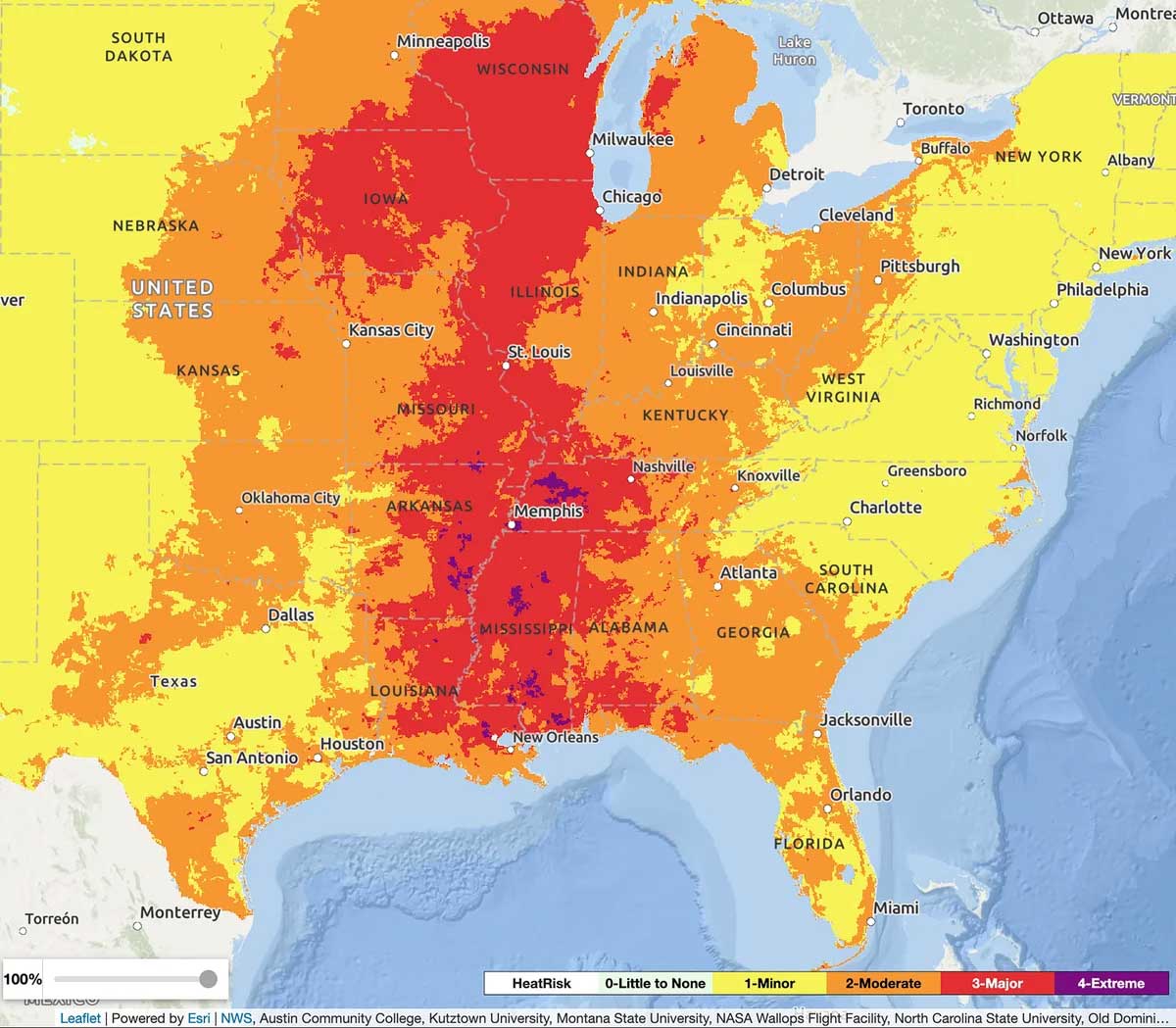The Midwest will endure a particularly nasty stretch of heat and humidity this week, and many people are pointing to “corn sweat” as one of the driving forces. Think highs in the upper 90s and lows in the upper 70s as commonplace in the coming days.
Corn sweat refers to the evapotranspiration process (common across the plant world) where leaves release water vapor into the air through their stomata. The process is a sign of healthy plants and the health of its surroundings, said Talon Becker, a University of Illinois Extension commercial agriculture educator. Conversely, when plants become stressed, like during a drought, they close their stomata to conserve water — a defense mechanism that limits the plant’s growth..
During a healthy growing season, an acre of corn “sweats off” about 3,000 to 4,000 gallons of water a day, according to the U.S. Geological Survey.
In Iowa — the No. 1 state in the nation for corn production — corn pumps out “a staggering 49 to 56 billion gallons of water into the atmosphere each day” throughout the state, the National Weather Service said. That can add 5 to 10 degrees to the dew point, a measure of the humidity in the air, on a hot summer day, according to USA TODAY.

This kind of news tends to send mainstream media in a tizzy, with USA TODAY, The Washington Post, CBS News, and several local news channels already talking about it. But, there’s a “but.”
“There’s a lot of forces at play in the middle of the summer,” said Meaghan Anderson, Iowa State University Extension and Outreach educator and field agronomist. “If you live in Iowa, you can’t avoid seeing all the corn in July. But it’s just one of many forces that time of year affecting our temperatures and humidity levels.”
While “corn sweat” may get talked about the most, other plants, such as soybeans, alfalfa, and sugarcane go through the same process, some at even higher transpiration rates than corn. Additionally, moisture from the Gulf of Mexico plays a major role in Midwest humidity, other experts note. So it’s probably no surprise that this bout of humidity is now over the Southeast and will be inching northward (with all that Gulf wetness) along the Mississippi Valley and into the Heartland.
No matter where it originates, be ready to feel it this week. The National Weather Service has an extreme heat warning listed for St. Louis through Thursday, with temps barely missing 100 degrees. Same for Peoria, Illinois, where it’ll top out in the mid-90s without ever getting to enjoy any cooling overnight. Omaha, Nebraska, will get to 99 degrees on Wednesday, while Wichita, Kansas, won’t get aggressively hotter until the weekend and climbing to 101 by Monday.
As this arc continues, both into the weekend and beyond, it’s possible that it could lead to more rainfall and longer-lingering spells of humidity for the affected areas. And that means your body will have a more difficult time cooling itself when outside.




:max_bytes(150000):strip_icc()/52491357698_4287dae116_k-1536x1024-73d0b06ebc0242db955cd55bc9361787.jpg)
:max_bytes(150000):strip_icc()/ND_Natural-Gas-Condemnations-Cert_Randy-Stevenson__Randy-Stevenson_IJ__2179-1024x683-1-4a409325716c469d926e629d855509af.jpg)
:max_bytes(150000):strip_icc()/Diseaseplaybookksouthernrust-b5873b78fd1949cab74ab000f2db061b.jpg)



:max_bytes(150000):strip_icc()/Updated3BigThings-1-farm-summer-orange-4-5f51fb49682f48eebede00ee3975bc98.jpeg)
:max_bytes(150000):strip_icc()/AgWithEmma-field-a59dd5afe12b4a788621b34d88eab213.jpg)
:max_bytes(150000):strip_icc()/MichaelM.SantiagoStaff-2225268443-3deb7a57d42b4bc2981632b141a7a630.jpg)